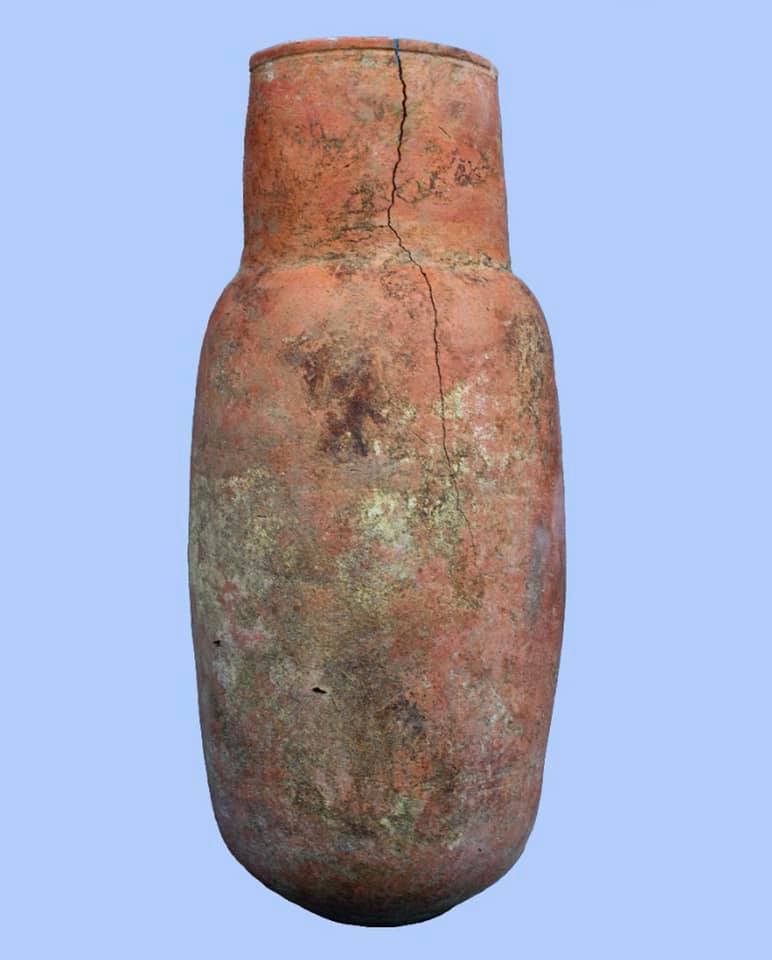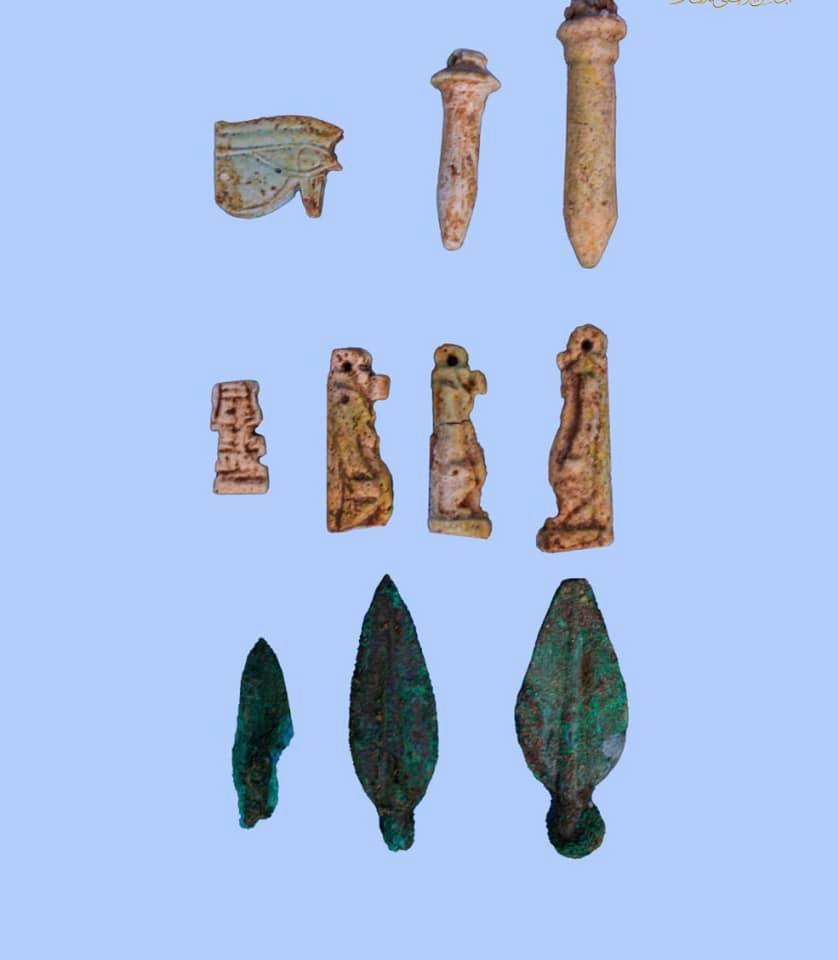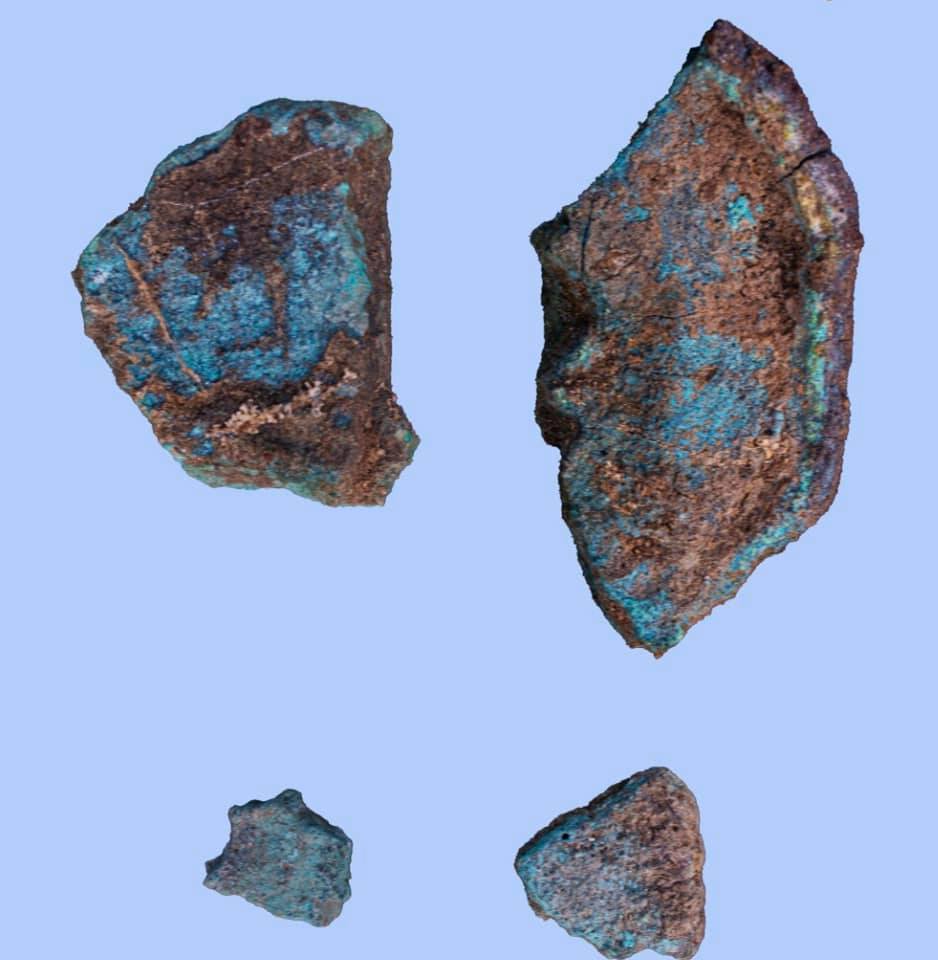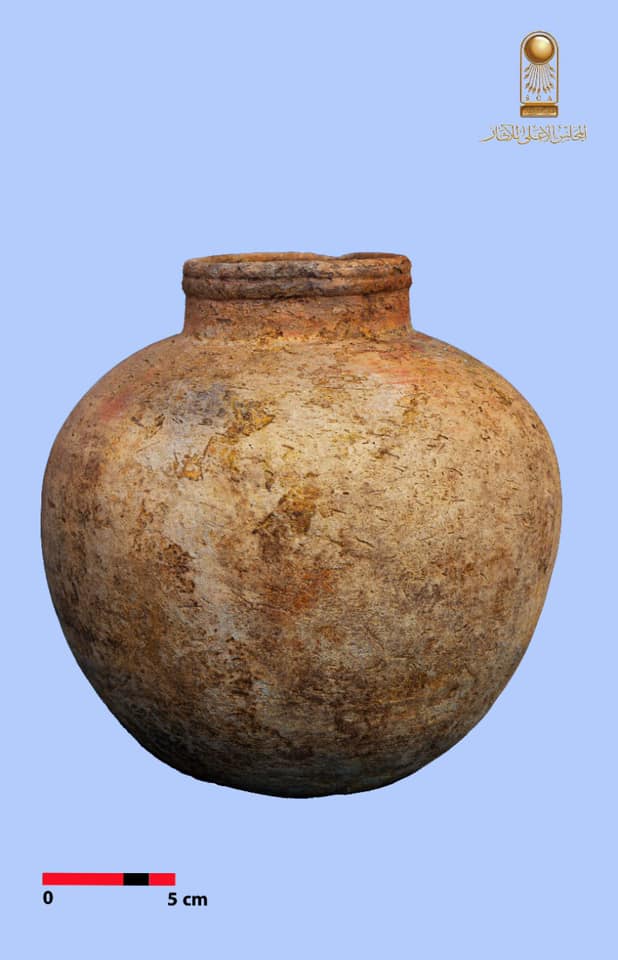CAIRO – 1 March 2022: The Egyptian archaeological mission operating in the Tel el-Kedwa area in North Sinai succeeded in discovering a group of the lost Horus Road water wells, which date back to Pharaonic times, as part of the Sinai Development Project 2021-2022.
The mission is headed by Director of North Sinai Antiquities and Head of the Mission Ramadan Helmy.
Secretary-General of the Supreme Council of Antiquities Mustafa Waziri confirmed that these are the first water wells to be discovered in the region. The wells first appeared in the inscriptions engraved on the walls of Karnak Temple during the era of King Seti I.
Waziri pointed out that five wells were discovered outside the walls of the castle of Tel el-Kedwa, in an area characterized by yellow sand.

Evidence also indicates that the wells were deliberately destroyed, except for only one well, so as not to be used by invaders during the period of the Persian invasion.
Head of the Egyptian Antiquities Sector at the Supreme Council of Antiquities Ayman Ashmawy explained that the only surviving well was built in an unconventional way. It was dug in yellow sand, with pottery rings placed on top of each other inside it. Each ring is about a meter in diameter and has three side openings that help people descend and ascend from the well.

The mission excavated and descended a distance of just over three meters, which resulted in the discovery of 13 pottery rings, and many pottery vessels dating back to the 26th Dynasty.
As for the results of the mission’s excavations inside the fort, Head of the Central Department of Antiquities of Lower Egypt Nadia Khader said that a 12-meter-long and 4-meter-wide warehouse was discovered, which has a number of pottery pots placed on top of each other, to drain water. This road was known during the El-Sawy era.

Moreover, the mission found the remains of kilns, from the El-Sawy era, likely to be a workshop for smelting copper ore. Circular-shaped copper alloy parts, as well as pottery bellows used in smelting, have also been found.

For his part, Director General of Sinai Antiquities Hisham Hussein stressed that Tel el-Kedwa is one of the most important sites of Egyptian military architecture from the 26th Dynasty.
The Egyptian mission revealed the remains of two castles in that area, one of which dates back to the era of King Psamtik I.

It is known that the Horus Military Road is one of the oldest roads in Sinai connecting Egypt and Palestine with a length extending to 220 km. It was known in the Egyptian Pharaonic texts since the era of the Old Kingdom as "The Way of Horus". The inscription of King Seti I at Karnak Temple is the main source that indicates the presence of a series of military fortresses and water wells along the road.
In the New Kingdom, specific names were given to each castle and water well on the ancient War Road of Horus.
Comments
Leave a Comment